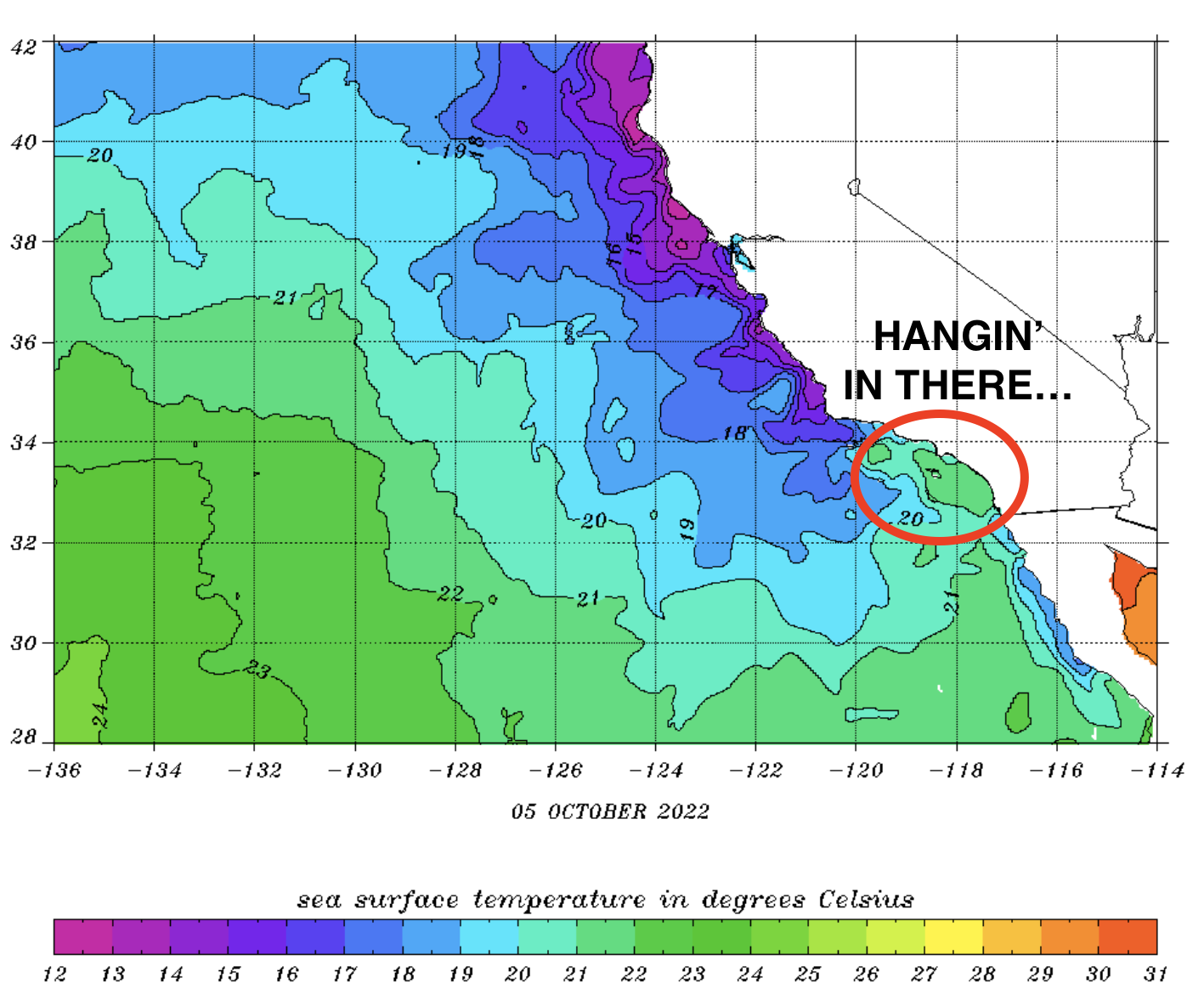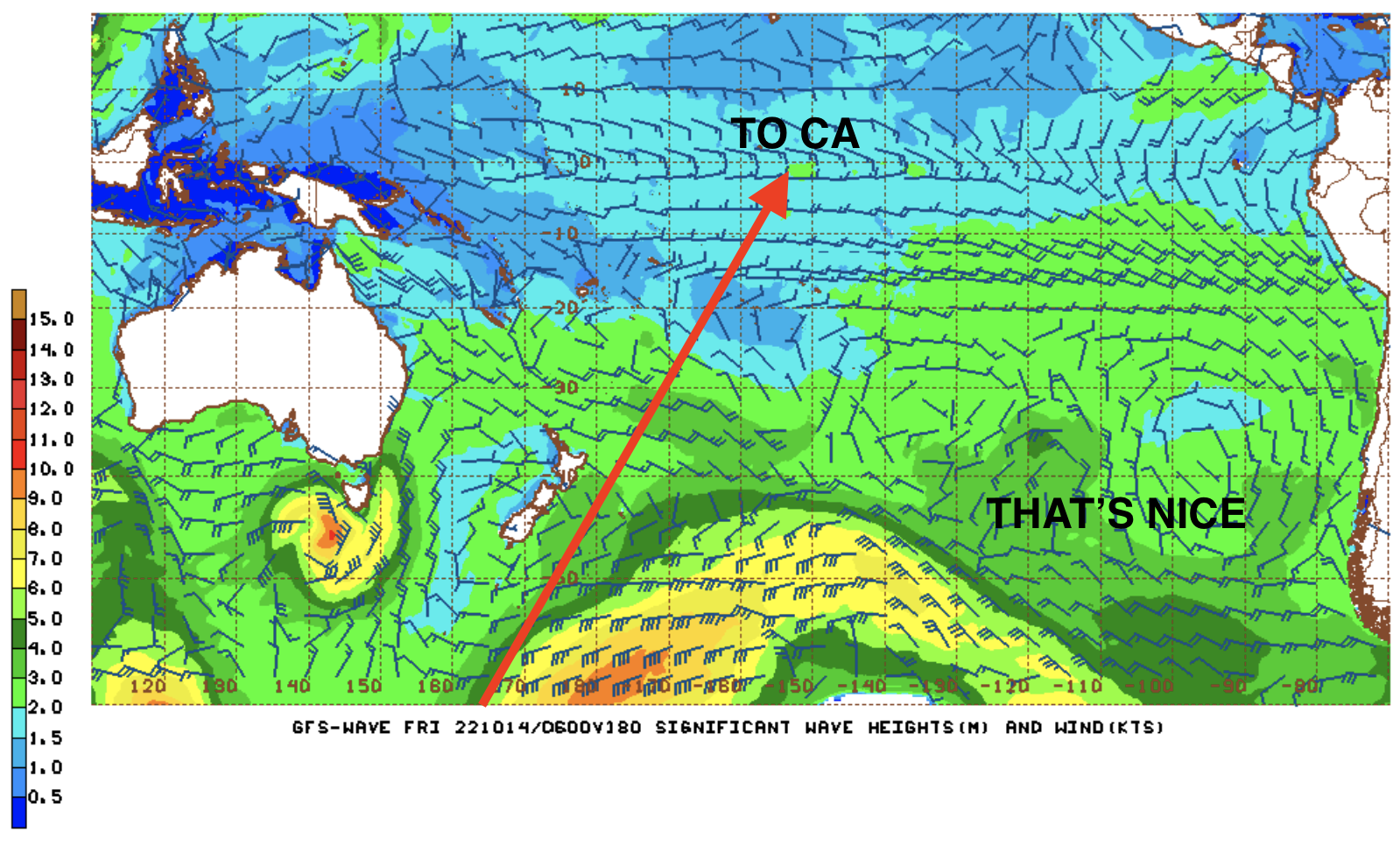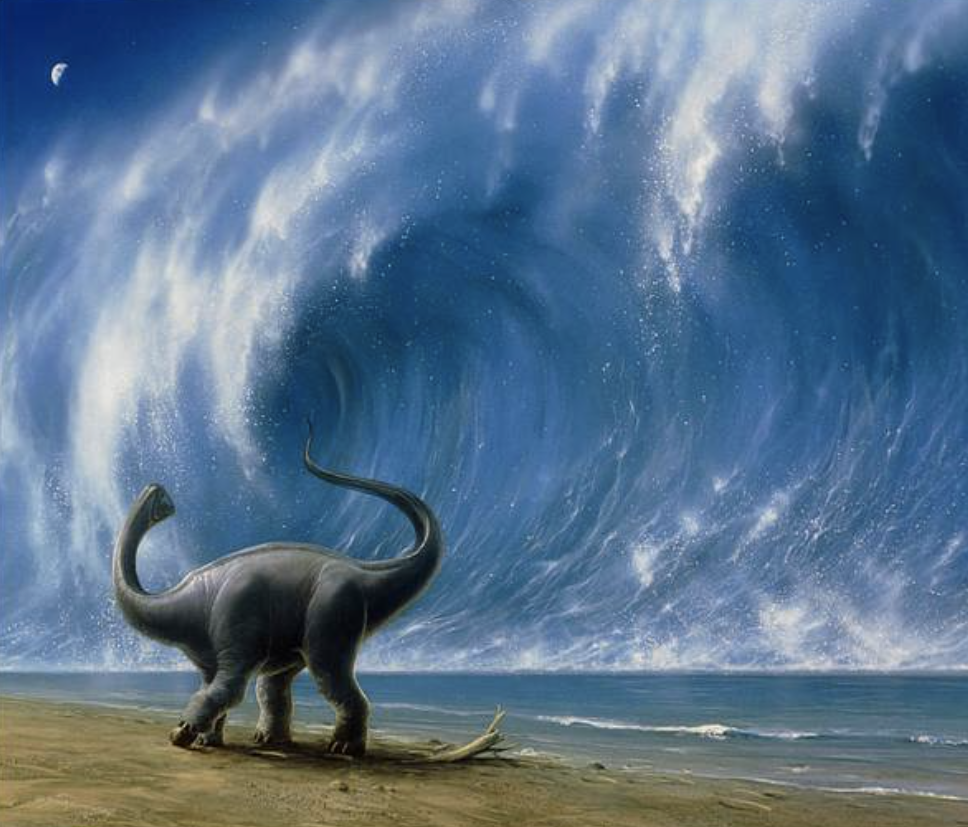Trick AND Treat
SURF:
Fun week around here with combo swell, sunny skies, and somewhat manageable winds. For this weekend, it's more of the same.
For Friday, we'll just have waist high SW/NW before new SW/NW shows up Saturday. Look for chest high surf which lasts into Sunday. And here's the tides, sun, and water temps for the next few days:
- Sunrise and sunset:
- 7:04 AM sunrise
- 6:00 PM sunset
- Water is still nice for this time a year- a couple degrees warmer than 'normal' at 67 degrees.
- And tides are starting to get extreme as they do this time of year:
- 3' at sunrise
- about 5.5' at lunch
- and 0' at sunset
FORECAST:
The N Pacific is really coming to life while the S Pacific doesn't realize that summer is over.
Models show a potent low pressure system forming off the Aleutians this weekend which will give us solid head high+ NW Wednesday BUT.. models also show this storm could get close to California and bring rain/wind. Regardless, we should see swell from it- choppy or not.
We also had a good storm off Antarctica last week which has sent SW our way the middle of next- which could coincide with the N Pacific swell/storm. So we've got waves coming mid-week BUT... could be messy. Forecast charts also show more storms in the N Pacific so we should see more NW late next weekend.
WEATHER:
Typical fall, huh? The storm track is starting to lower as it should this time of year and the Pacific NW/Northern Rockies have seen snow while we've seen weak cold fronts down here and light offshores/sunny skies behind them. For the weekend, we'll have cool sunny skies with temps in the low 70's. As mentioned above, the storm track may lower a little more and at best we'll see a cold front come through by Wednesday for showers and at worst (which actually is good as we need the water), a low pressure system on top of us with rain and wind. That also means a chance of snow in the local mountains above 7,000'! If anything changes between now and then, make sure to follow North County Surf on Twitter!
BEST BET:
This weekend with chest high sets from the NW/SW or my personal favorite- storm surf on Wednesday!
NEWS OF THE WEEK:
Tropical storms are well documented and their formation are fairly well understood. Heck- hurricanes even have their own names! Warm tropical water is the fuel for these storms. Not to oversimplify things, but warm air rises of course, so as the warm moisture rises off the oceans- forming thunderstorms- cool air rushes in to replace it- causing wind. And long story short, you get a hurricane in the most extreme conditions.
But how do storms form in cold weather- i.e. Aleutian storms that create our NW swells in winter? Typically, an 'extratropical' storm forms outside of tropical regions- like the N Pacific, despite the phase tropical in its name. These storms are formed when very cold air masses in the upper-levels interact with warm air masses over the sea (e.g., Pacific or Atlantic). As these bodies of cold air collide with warm air bodies, weather fronts form.
But how do storms form in cold weather- i.e. Aleutian storms that create our NW swells in winter? Typically, an 'extratropical' storm forms outside of tropical regions- like the N Pacific, despite the phase tropical in its name. These storms are formed when very cold air masses in the upper-levels interact with warm air masses over the sea (e.g., Pacific or Atlantic). As these bodies of cold air collide with warm air bodies, weather fronts form.
As the fronts mature and strengthen, the denser, drier cold air masses move underneath the more buoyant warm air masses and help force the warm air to rise. As a result of this rising air leaving the surface, a low-pressure system forms into a (rapidly) deepening storm. In the northern hemisphere, the winds of these cyclonic systems deflect to the right as a result of the Coriolis Effect (an effect whereby a mass moving in a rotating system experiences a force- the Coriolis force- acting perpendicular to the direction of motion and to the axis of rotation. On the earth, the effect tends to deflect moving objects to the right in the northern hemisphere and to the left in the southern and is important in the formation of cyclonic weather systems).
A further process of warm air rising in the atmosphere starts cooling it and therefore releases its potential energy. The air becomes more buoyant and consequently fuels the storm’s core with even more intense upward movement of air.
At the final stage, this further lowers the pressure at the surface, intensifying the storm. The most organized storms become a so-called bomb cyclones with explosive strengthening of the wind field and rapidly deepening central pressure.
Even though hurricanes get the publicity, extratropical storms from the Aleutians are sometimes more powerful due to their immense size. A storm roared into Alaska last month and an offshore ocean buoy reported waves above 35 feet for 12 hours, peaking at more than 50 feet. Winds gusted over 70 mph for 11 hours- with top speeds of 90 mph. Spots along the Alaska coastline also experienced a storm surge of 11 to 14 feet. Oregon got the wrath of the swell with buoys reporting 40' at 15 seconds, but the storm was aimed towards Alaska, so we only got a glancing blow down here in Southern California last weekend with shoulder high sets.
PIC OF THE WEEK:



















































